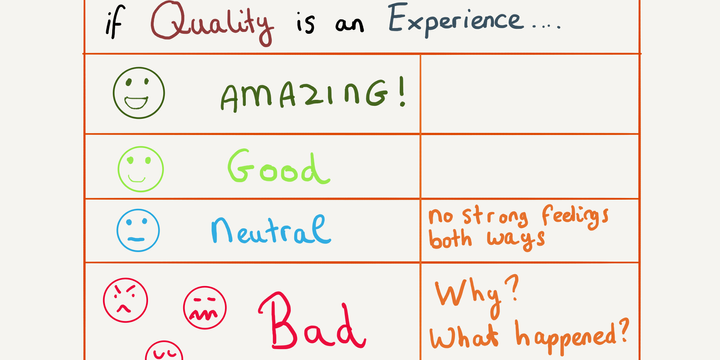A distributed mob testing session
After I had facilitated a distributed Exploratory Testing workshop, that same client asked me to help them out some more and expand on the topic. I thought it would be a good idea to try out a distributed mob testing session to help them. It would have the added benefit of showing them how effective testing with a group can be. My first experience with mob testing was with Maaret Pyhäjärvi back in October 2016, so I learned from one of the best! I learned a lot by observing how she gave the gave tips and which questions she asked to help the group progress.
In my last post, I mentioned some difficulties with the distributed part of the workshop when it came to doing exercises that the participants had to do alone. I had no way to keep tabs on how they were doing. Therefore, I opted to do everything as a group this time. The workshop was 100% distributed this time, since I did it from the comfort of my own home (the first time I had 2 people physically present with me).
We started the session with practicing some more with making exploratory testing charters (or missions, if you prefer to call them that). This was a great starting point, because it allowed me to repeat some of the material from last week. Repetition is key in learning! It turned out some of the participants really needed that, since they were still a little stuck in the ‘mission is a test case’-mindset. It was a good lesson for me as well to see the power of repetition in practice through other people (that was the first time for me to witness it in a ‘teacher role’, can you believe it!?) I could really ‘check’ if what I was trying to teach last week actually came through! Great moment in the workshop that I liked A LOT.
I took some time to explain that having a sensible test goal in your charter is the most important thing to write down. In the end, we want to communicate what we do for testing to others. Explaining why you want to test something will help yourself and others.
To ease into the testing session, I wanted to expand a bit on the ‘think before you test’ idea. We were going to test a public website on the internet, so we started making a Product Coverage Outline together. We used the SFDIPOT heuristic to make it (from the Heuristic Test Strategy Model). I like this heuristic a lot, as it helps me to structure my thoughts around a product. What was hard for me, as a facilitator, was to shut up and let the group do most of the thinking. I have the tendency to nudge people in the right direction (or phrased more honestly: the direction I think is right) too quickly. When I talk less, I learn more. Learn as a facilitator? Hell yeah, people can surprise me with their creative ideas. That’s the thing I love so much from working in a group. If you listen more, you can learn more (and you work on your patience at the same time, ain’t that great).
From the Product Coverage Outline, we decided to test some ideas that we had for this website. We went over some tools to use during the mob testing session and off we went. This was the hardest part for me. In a mob testing session, you have a few roles: the driver (the person pushing the keys and clicking the mouse) and the navigators. The driver is not really allowed to make decisions on where to click, what to type. The navigators should tell him/her what to do and why. There is another role though, and that is the role of the facilitator. Since I was sharing my screen through Skype I had to play two roles at the same time: driver and facilitator. Mixing these roles successfully….well…let’s say that didn’t succeed 100%. I don’t think it was crystal clear for the other people when I was shifting into what role. In the end, I decided to let go of the concept of roles for now. We were still quite successful during this test session, I think. Everyone was participating, bringing in new ideas, telling me to try this or that. It seemed like people were having fun and they were learning. That to me was the goal.
After the testing session, we were all pretty tired. All in all, we were busy for three hours. It’s quite energy consuming to do mob testing. You’ve got to communicate why you want to do what, and since we couldn’t see each other we really had to focus our listening. With a distributed workshop, you realise how much you normally rely on non-verbal cues. It’s also a bit crazy that I have facilitated a workshop for people that I will maybe not even meet face to face. Would love to shake their hands one day. Who knows!
So, that was my experience for now with facilitating distributed workshops. If you are used to working in a distributed team, maybe you have some experiences of your own to share. I, for one, would love to hear them! Also, if you haven’t tried testing in a group remotely, give it a whirl! It can bring you great things. There are better tools out there than Skype. I’ve used Screenhero as well, but I don’t know if it works in groups. There’s also Appear.in that works quite alright. If you’ve got a good tip, please mention it here in the comments.
Thanks for reading!



Comments ()